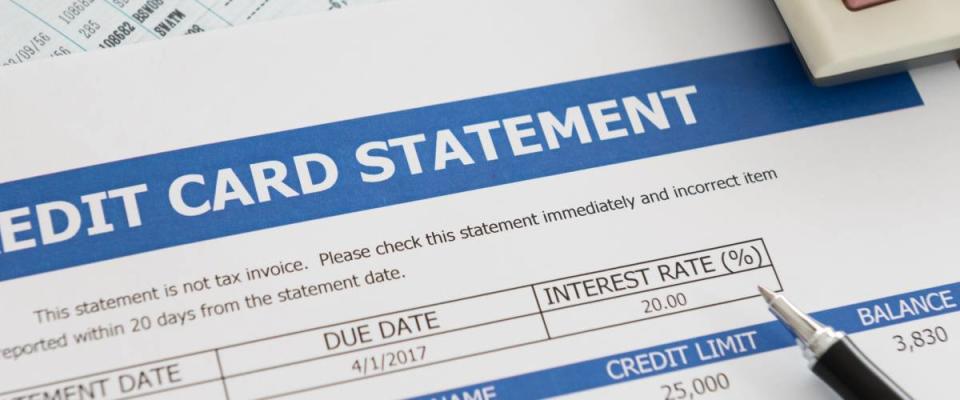This hidden credit card perk can help with your next big purchase

If used responsibly, your credit cards are a valuable tool to build credit and earn rewards. But most cards have a lesser-known benefit that is a big help for large purchases.
The trick is taking control of your billing cycle. Most cards have what’s called a grace period. It’s not like the extra days some mortgage lenders offer to get your monthly payment in. It’s simply the amount of time your card issuer gives you to pay your balance after the company tallies your purchases each month.
If you understand this cycle, then you’ll have an advantage when you’re shopping for big-ticket items online (a widescreen TV, new car tires) or making a large payment with your card (your child’s tuition, a car down payment).
And if you don’t master your card’s grace period, your new, but super-necessary refrigerator can easily cost you punishing interest charges.
Uncovering how a credit card grace period works

A billing cycle, or statement cycle, when you’re racking up your monthly charges can last about 28 days to 31 days, always beginning and ending on the same date each month. Your grace period comes afterward, lasting from the day the company adds up your monthly purchases through your payment due date.
We’re coming to the explanation of how your grace period helps with big purchases, but the key to remember is that your most recent charges don’t accumulate interest during that stretch of several weeks or more — as long as you pay off your balance each month.
Credit card companies aren’t required to offer a grace period, the Consumer Financial Protection Bureau says. But nearly all do for people who pay their bills in full, and the agency notes that the businesses must mail or deliver your credit card bills at least 21 days before payment is due.
Chase generally offers a minimum 21-day grace period, while Citibank's minimum is 23 days. Bank of America, American Express, Capital One and Wells Fargo usually have at least 25-day grace periods for their credit cards.
How to use credit card grace periods to your advantage

The best way to gain the maximum benefit from your grace period is to use your credit card for large purchases at the very beginning of your billing cycle. So learn what day your bank counts up your charges and buy that fridge in the days right afterward.
Depending on the length of your grace period, you’ll have nearly the full billing cycle of about a month, PLUS the grace period of several weeks or more. That could give you close to two full months to pay off your balance without any interest, allowing a bit more financial flexibility when planning your budget.
During that window, you might have an additional payday or two before your bill is due, giving you time to build up cash to pay off that purchase. That extra time can come in handy if you face a surprise doctor’s bill or car repair when you need to pay for that new TV.
Remember: Any balance left over after your grace period will build interest.
The grace period perk is especially helpful when you have a new credit card and you’re trying to meet the requirements for a welcome offer. You maximize the value of your credit card bonus or rewards program when you aren’t offsetting it by paying interest.
Pay your full balance to keep your payoff cushion

To keep the longer payoff window that a grace period provides and avoid interest on your purchases, you do need to pay the full balance. If you carry a balance and just pay the minimum, you likely will lose your grace period for new purchases.
This means you’re not only charged interest sooner for purchases, but you’re also charged interest on the unpaid balance. To restore your interest-free grace period, you likely will have to pay your bill in full and on time for several consecutive billing cycles, depending on your credit card’s rules.
And a warning on cash advances: They almost never come with a grace period and typically charge interest beginning on the day you accept that money.
It’s best to avoid credit card cash advances for a variety of costly reasons: cash advance fees, very high interest rates and no grace period.
If you're in a bind, consider other options before going for the cash advance. Borrowing from a friend or family member may be an option, or you might consider getting a low-interest debt consolidation loan from a bank, credit union or online lender. Either choice will likely cost you much less than a cash advance, and you can easily compare lending options to cut the interest rate on your debt.
More ways to stretch your dollars

Don’t miss savings on your car. While you’re in the mindset of finding new ways to save on your monthly bills, do a quick review of your car insurance rate to avoid overpaying by hundreds of dollars a year. The same kind of simple comparison shopping could help you save when you renew or buy homeowners insurance.
Dig out of credit card debt If you’re trying to get back to paying off your credit cards each month, find out how to combine your balances to put your debt behind you faster. You’ll get one monthly payment with lower interest.
Don’t underestimate the power of pennies. What if you gathered up the cents leftover from your everyday purchases and used them to start investing or add a little extra to your retirement savings? Here’s how you can invest your “spare change.”
This article provides information only and should not be construed as advice. It is provided without warranty of any kind.

 Yahoo Finance
Yahoo Finance 